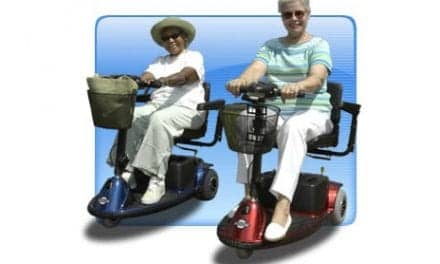While COVID-19 has highlighted the need to improve standards in long-term care facilities, addressing issues related to safe mobility is also key to improving seniors’ quality of life, Simon Fraser University researchers suggest, in a media release.
“About 25 percent of older adults in long-term care who experience hip fracture die within six months, so it’s really important that we direct efforts to prevent falls and also to prevent hip fracture in the event of a fall, especially in the high-risk, long-term care setting,” says study lead, Steve Robinovitch, an SFU professor in the Department of Biomedical Physiology and Kinesiology.
“We need to remember that it’s not just infectious disease that strikes this population, it’s also problems of mobility and injuries due to falls that are often on top of their list of challenges,” he adds.
In their study, published in the Journal of Bone and Mineral Research, the team analyzed 2,377 falls experienced by 646 residents. Only 30 of the falls caused hip fracture, a little over 1% of the total number of falls recorded.
“Only a small portion of falls caused hip fracture, but the problem is that falls are so common, with the average resident in long-term care falling three times per year, that the cumulative toll is enormous,” Robinovitch adds.
All hip fractures were caused by falls from standing height that caused impact to the pelvis on the fracture side, they suggest. While backward falls were safest, forward falls were just as likely as sideways falls to hip fracture, due to rotation during descent. Factors such as arresting the fall with outstretched hands, body weight or osteoporosis had no effect.
However, falling while wearing a hip protector reduced the risk of hip fracture by more than twofold.
Related Stories:
Direct Supply Inc to Distribute Next Generation Fall-Safe Hip Protectors
With Easy Lift Up, You Can Get Up if You’ve Fallen
Falls May be Inevitable; the Difference is Learning to Land
“Our study shows that older adults in long-term care in British Columbia are wearing and benefiting from hip protectors. Hip protectors were worn in over 70 percent of falls, and halved the risk for hip fracture. But across Canada, there’s evidence that only 10 to 20 percent of people in long-term care are wearing hip protectors,” Robinovitch explains, in the release.
“We’re working with partners in Ontario to develop strategies to increase uptake of hip protectors in long-term care homes, and developing strategies to translate the successful BC model to other areas of Canada and internationally.”
He says the team is continuing to analyze the data to gain a more precise understanding of the loads that are applied to bones during falls. These data can be used to help improve the design of hip protectors to provide more effective protection from the types of impacts that cause hip fractures.
In addition, per the study, mobility aids reduce the likelihood of older adults fracturing a hip during a fall by over threefold. Robinovitch says families and care providers can encourage seniors to use their walkers to preserve mobility and maintain their independence while providing protection against injury.
[Source(s): Simon Fraser University, EurekAlert]





